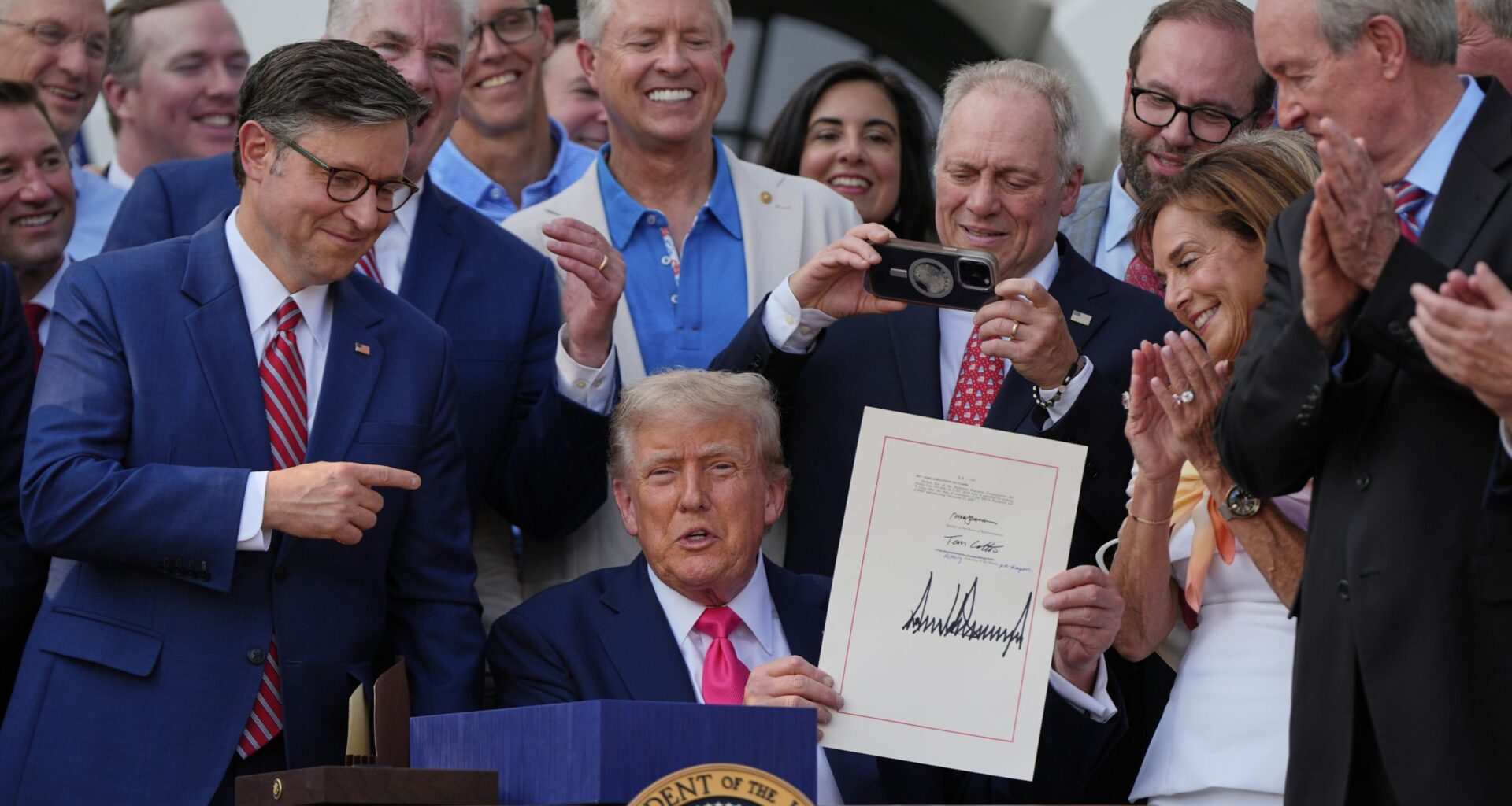President Donald Trump is charting a course that may end in the economy’s third meltdown in less than 20 years. Whatever he and his economic courtiers think they’re doing, the waves of unprecedented budget deficits now under his One Big Beautiful Bill Act and his tariff war could trigger a grave economic crisis that will recall the Financial Crisis and the pandemic.
Whether budget deficits matter and how much they matter have been political issues since the government began regularly operating in the red half a century ago. But deficit hawks cried wolf so often while the United States economy outperformed other advanced countries that most people no longer pay serious attention to the deficit. Liberal advocates of the free-lunch approach to government spending and revenues latched on to “Modern Monetary Theory,” a set of baseless claims that deficits never matter because the government can always print the money to cover them. The president and his cowering congressional Republicans have embraced the same Panglossian view to defend their tax cuts and soaring spending for defense and deportations.
The economics of public finance is indifferent to the expedient rationales of both sides. Deficits always have effects. They’re a key weapon for reviving the economy when it’s underwater. They also matter in normal times because market economies run on credit, and since the government can’t go out of business, it’s always first in line for available credit. So, when companies need loans to purchase technologies and other equipment, build factories, or conduct research and development, and when people need loans for a house, an automobile, or winter jackets for the kids, they compete for the credit left over after the Treasury is done borrowing.
Deficits matter in normal times like today, depending on their size as a share of the economy and the funds available. Together, these factors largely determine the interest rates that the Treasury, private companies, and American consumers must pay for credit.
That now poses a serious dilemma for the economy. The Congressional Budget Office (CBO) analyzed Trump’s program as enacted. It calculated that the budget deficit will exceed $2.3 trillion or 7 percent of GDP next year and every year for the next decade.
Lower taxes for wealthy households and profitable companies will be responsible for most of the tsunami of red ink. CBO reports that over the next five years, from 2026 to 2030, Trump’s One Big Beautiful Act will reduce federal taxes on high-income Americans by an average of $504 billion annually and federal taxes on businesses by $130 billion annually. The sweeping law passed without any Democratic votes also harms millions of Americans by cutting Medicaid and ACA funding by an average of $93 billion annually and reducing clean energy subsidies by an average of $45 billion annually. Even so, those painful cuts will offset less than 22 percent of the reduced revenues from people and businesses at the top.
The result of all this Republican borrowing matters greatly, because a deficit of 7 percent of GDP represents 90 percent of all annual private savings. From 2022 to 2024, those savings averaged 7.7 percent of GDP—4.1 percent of GDP in personal savings by Americans, and 3.7 percent of GDP in retained earnings by businesses. On the path set by Trump and ever-compliant congressional Republicans, financing the coming deficits by ourselves would require, in effect, that everyone invest 90 percent of their yearly savings for retirement, college tuitions, or home downpayments and 90 percent of undistributed business earnings in new Treasury securities.
Fortunately, foreign governments and investors have, for several decades, used some of their savings to buy our Treasury securities, stocks, and corporate debt. At last count, they now hold $9.6 trillion or 33 percent of all publicly-held U.S. government debt, $4.5 trillion or 32 percent of all U.S. corporate debt, and $16.9 trillion or 27 percent of U.S. stocks. When Trump and his America First fans blame other nations for “ripping off” the United States, they don’t mention (and probably don’t know) how much their incomes and lifestyles depend on foreign loans and investments.
The outsized deficits coming under Trump’s program will strain those foreign creditors. Our budget deficits were larger during and immediately following the Financial Crisis and the pandemic, but those spikes were anomalies that receded quickly as the economy recovered. In normal times like today, federal red ink has represented a fraction of what we now face, with deficits averaging 2.1 percent of GDP in the 1990s, 1.5 percent of GDP from 2000 to 2007, and 3.8 percent of GDP from 2012 to 2019.
During the financial crisis and the pandemic, the Federal Reserve also kept the cost of public and private borrowing low. At the same time the deficits surged, the Fed pumped waves of new credit into the financial system through unprecedented purchases of trillions of dollars in Treasury securities and corporate bonds. These “quantitative easing” policies were Hail Mary passes that broadly succeeded because the economy was so depressed that inflation remained low despite the extraordinary levels of fiscal and monetary stimulus.
Trump’s impending avalanche of new federal borrowing is not an emergency response to the economy breaking down. Since mid-2022, the Fed has been selling off the loans it purchased under quantitative easing. Trump’s program will exacerbate post-pandemic deficits that have averaged nearly 6 percent from 2022 to 2025. The hunt for the trillions of dollars in savings needed to finance the coming deficits and support business investment, mortgages, and consumer borrowing will inevitably push up interest rates.
That’s one reason Trump regularly attacks the Federal Reserve and his appointed chair, Jerome Powell, for not cutting interest rates. But acceding to Trump’s demands in this environment won’t produce the effects he expects. The Fed directly controls only one interest rate, the “federal funds rate” for overnight loans between banks. It’s likely that when the market faces trillions of dollars in new annual deficit financings, continuing demand for business and consumer credit, and rising inflation, interest rates will increase even if the federal funds rate falls. The resulting slowdown or possible recession will further increase the deficit.
American economic stability in 2026 and onward depends on the willingness of foreign investors and governments to lend us more, year after year, than they ever have before. Their willingness to purchase one-third of our public debt and nearly one-third of our economy has rested on their confidence that the U.S. will remain highly productive, innovative, and stable.
Their confidence will be sorely tested by MAGA running up trillions of dollars in new, annual public debt caused by shrinking tax revenue from the wealthy and corporations and by imposing punishing tariffs on imports from the creditors we need. If they lose patience and reduce their purchases of U.S. Treasury securities—or worse, sell holdings—our interest rates will spike, the stock and bond markets will plummet, and the economy could crash. And this time, more deficit stimulus won’t work, and flooding the system with waves of additional credit won’t work.
Trump is playing chicken with the countries the United States needs to keep its economy going. For once, the deficit hawks are right.
Related

